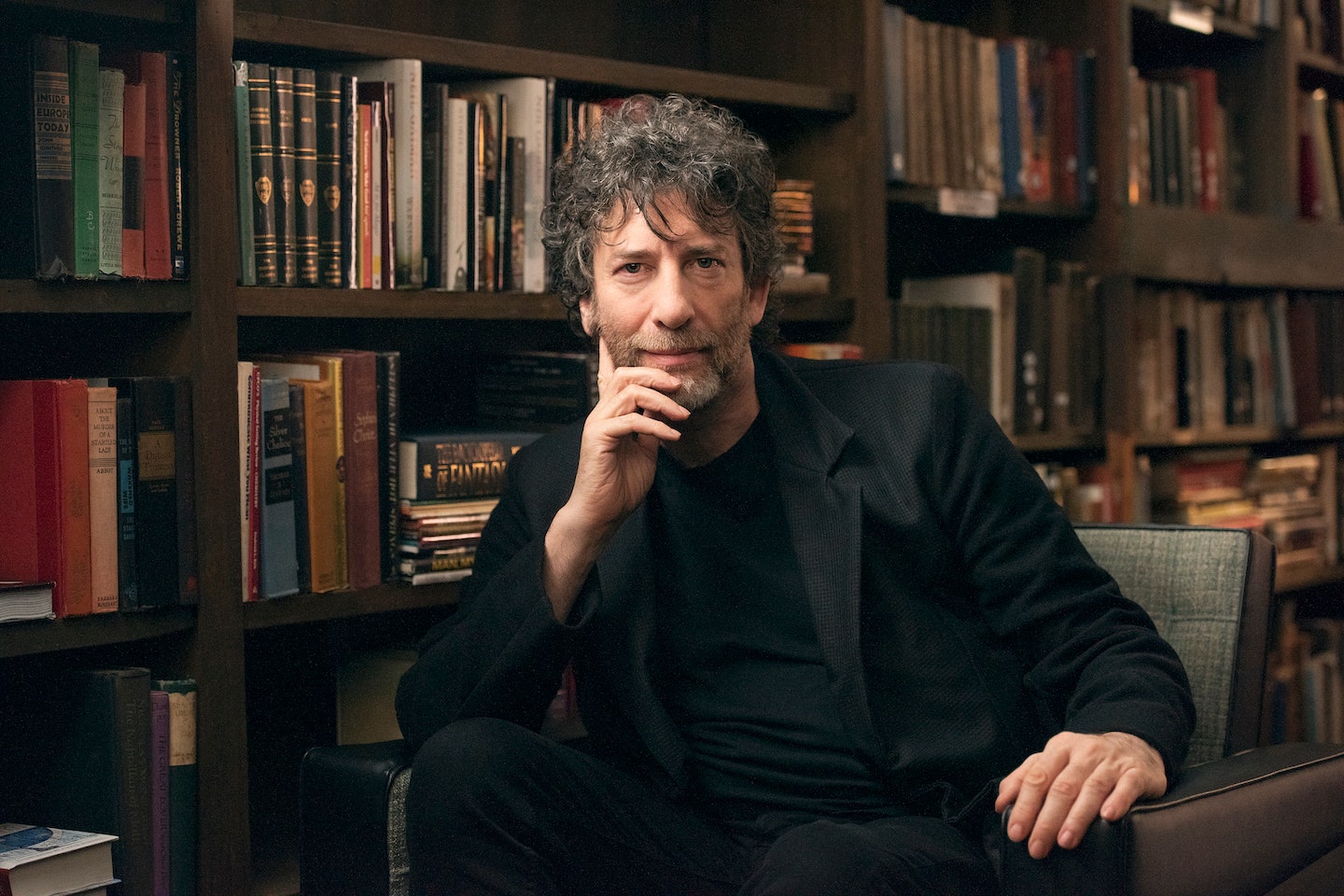
Neil Gaiman, born on November 10, 1960, in Portchester, England, embarked on a literary odyssey that would reshape the contours of fantasy storytelling. Raised in a family that fostered creativity and imagination, Gaiman's early years were marked by an insatiable curiosity. His voracious reading habits and exposure to diverse genres laid the foundation for a fertile imagination that would later bloom in the world of literature.
Gaiman's formative years were greatly influenced by the works of J.R.R. Tolkien, C.S. Lewis, and H.P. Lovecraft. These seminal authors not only ignited his passion for the fantastical but also instilled in him a deep appreciation for mythology and folklore. This early exposure to rich narrative traditions became the bedrock upon which Gaiman would build his distinctive storytelling prowess.
Neil Gaiman's Literary Career
Inception Into The World Of Writing
Gaiman's foray into the literary realm began with journalism and short stories. His breakthrough came in the late '80s with the comic book series "The Sandman," a dark and intricate narrative that showcased Gaiman's ability to weave complex tales. This marked the genesis of a career that would transcend traditional literary boundaries.
Key Milestones And Turning Points
The publication of "Neverwhere" in 1996 catapulted Gaiman into mainstream recognition, solidifying his status as a master storyteller. The subsequent release of "American Gods" in 2001 and "Coraline" in 2002 further expanded his literary footprint, earning critical acclaim and a devoted fan base. Gaiman's journeywas punctuated by Hugo, Nebula, and Bram Stoker Awards, affirming his place among the literary elite.
Notable Works By Neil Gaiman
Coraline - Unveiling The Shadows
Gaiman's "Coraline," a dark fantasy novel, delves into the eerie and mysterious. The tale of a young girl who discovers an alternate world behind a secret door explores themes of courage and identity, resonating with readers of all ages. The novel's adaptation into a stop-motion film in 2009 only amplified its impact, introducing Gaiman's storytelling prowess to a broader audience.
American Gods - A Modern Mythology
"American Gods" stands as a magnum opus, blending ancient mythology with contemporary America. Gaiman's exploration of belief, identity, and the clash between old and new gods captivates readers with its profound insights. The novel's adaptation into a television series brought Gaiman's narrative brilliance to the visual realm, further cementing his influence.
Neil Gaiman's Writing Style
The Alchemy Of Words
Gaiman's writing style is an alchemical blend of the fantastical and the mundane. His prose, rich in vivid imagery and poetic language, transports readers to worlds where the impossible becomes palpable. Gaiman's narratives are marked by a delicate balance between darkness and whimsy, creating an immersive experience that lingers in the reader's mind long after the final page.
Multi-Dimensional Characters
One of Gaiman's hallmarks is his ability to craft multi-dimensional characters. From the enigmatic Morpheus in "The Sandman" to the resilient Coraline, Gaiman's characters resonate with authenticity, making them relatable even in the most fantastical settings. This dexterity in character development contributes significantly to the emotional depth of his works.
Influence And Impact On The Fantasy Genre
Shaping The Landscape Of Fantasy
Gaiman's influence on the fantasy genre is profound. His works, often transcending conventional genre boundaries, inject a literary sophistication into fantasy storytelling. Gaiman's exploration of mythology and folklore, coupled with his unique narrative approach, has inspired a new generation of writers, reshaping the landscape of modern fantasy literature.
Blurring Boundaries
Gaiman's ability to seamlessly blend fantasy with elements of horror, mythology, and reality has broadened the scope of the genre. By challenging traditional notions of storytelling, he has encouraged a more inclusive and expansive approach to fantasy, fostering a diverse array of voices within the genre.
Collaborations And Adaptations
Interweaving Artistic Threads
Gaiman's collaborative spirit extends beyond the written word. His partnerships with artists like Dave McKean, who illustrated "The Sandman" series, showcase a symbiotic relationship where words and visuals harmonize to create a holistic narrative experience. These collaborations underscore Gaiman's commitment to elevating storytelling through various artistic mediums.
From Page To Screen
Gaiman's works have found a second life on screen, with adaptations like "Stardust," "Good Omens," and "American Gods." His involvement in the adaptation process, coupled with a keen understanding of the unique strengths of each medium, ensures that the essence of his stories remains intact while embracing the visual language of film and television.
Neil Gaiman's Work In Comics
The Sandman - Redefining Comic Narratives
Gaiman's impact on the comic book industry is exemplified by his groundbreaking series, "The Sandman." Breaking away from conventional superhero tropes, Gaiman crafted a narrative that elevated the medium to new literary heights. The series' exploration of mythology, dreams, and the human condition demonstrated the narrative potential inherent in comics.
Legacy In Sequential Art
Gaiman's influence reverberates through the comic book world, inspiring a new wave of writers to explore the untapped potential of sequential art. His commitment to pushing the boundaries of storytelling within the comic book medium has left an indelible mark, contributing to the growing acceptance of comics as a legitimate and sophisticated form of literature.
Neil Gaiman's Contributions To Film And Television
Adapting Dreams To Screen
Gaiman's involvement in film and television extends beyond adaptations of his works. His contributions as a screenwriter, including the script for "Beowulf" (2007), showcase his versatility in translating narratives across different visual mediums. Gaiman's ability to navigate the intricacies of filmmaking underscores his dedication to ensuring that his stories maintain their integrity on screen.
Television Triumphs
The success of "Good Omens," a television adaptation of the collaborative novel with Terry Pratchett, exemplifies Gaiman's adeptness in the realm of television. His role as showrunner allowed him to not only preserve the essence of the source material but also infuse the series with new dimensions, captivating both longtime fans and newcomers.
Personal Life And Philanthropy
Beyond The Pages
Beyond the realms of fiction, Gaiman's personal life adds depth to the narrative of the man behind the pen. His marriage to musician Amanda Palmer and the birth of their son, Anthony, offer glimpses into a life where creativity and art intertwine. Gaiman's public persona, often characterized by wit and accessibility, further endears him to readers.
Philanthropic Pursuits
Gaiman's commitment to philanthropy is reflected in his support for various causes, including literacy programs and libraries. His advocacy for the importance of reading and access to literature underscores a belief in the transformative power of stories to enrich lives and broaden perspectives.
Critical Reception Of Neil Gaiman's Works
Acclaim And Awards
Gaiman's works have garnered widespread critical acclaim, earning him numerous awards, including the Hugo, Nebula, and Bram Stoker Awards. The sheer diversity of recognition, spanning genres and mediums, attests to the breadth of Gaiman's storytelling prowess. His ability to resonate with both literary critics and a broad readership underscores the universal appeal of his narratives.
Cultural Impact
Gaiman's influence extends beyond literary circles. His impact on popular culture is evident in the proliferation of references to his works in various forms of media. The enduring popularity of "The Sandman," for instance, attests to its status as a cultural touchstone that continues to captivate audiences across generations.
Conclusion
Neil Gaiman's journey from a curious child with a penchant for storytelling to a literary luminary has been nothing short of extraordinary. His ability to navigate diverse artistic mediums while maintaining the integrity of his storytelling is a testament to his versatility and enduring creativity. As Gaiman continues to shape the landscape of fantasy and inspire storytellers across the globe, his legacy stands as a testament to the enduring power of words to transport us to realms where dreams and reality converge.

